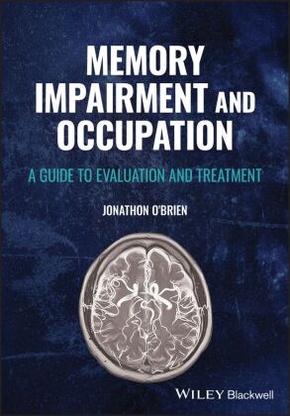
Memory Impairment and Occupation - A Guide to Evaluation and Treatment
| Verlag | Wiley & Sons |
| Auflage | 2024 |
| Seiten | 272 |
| Format | 25,0 x 1,5 x 32,3 cm |
| Gewicht | 690 g |
| Artikeltyp | Englisches Buch |
| EAN | 9781119708865 |
| Bestell-Nr | 11970886UA |
MEMORY IMPAIRMENT AND OCCUPATION
Apply the latest evidence-based knowledge of human memory in your occupational therapy practice.
Memory is among the core components of the human experience. We draw continuously on memory in our everyday lives, facilitating our daily routines and building on our past experiences to improve our future occupational performance.
Memory loss impairs human occupation in myriad ways. Memory Impairment and Occupation: A Guide to Evaluation and Treatment is a practical, evidence-based guide that is essential reading for occupational therapists, providing ways forward for those working with memory impaired individuals. There are chapters on concepts of memory, memory development throughout the lifespan, amnesia in traumatic brain injury, dementia and post-traumatic stress disorders, memory impairments in children and adolescents, adults with acquired brain injury, and older people. The book draws on the latest evidence from cognitiv e neuroscience, while maintaining a consistent focus on the distinct theoretical contributions of occupational therapy and occupational science.
Memory Impairment and Occupation: A Guide to Evaluation and Treatment readers will also find:
_ Points for discussion, case studies, activities and simulation activities that can be used in personal study, in-service training, or university tutorials and seminars
_ Lucid outlines of relevant neuroanatomy
_ An innovative 'memory checklist' that can be used as part of task analysis when working with people with memory impairments
Memory Impairment and Occupation: A Guide to Evaluation and Treatment is ideal for occupational therapy clinicians and students concerned with the assessment and treatment of people with memory impairments. It will also be of interest to physicians, psychologists, speech and language therapists, and all those working with this population.
